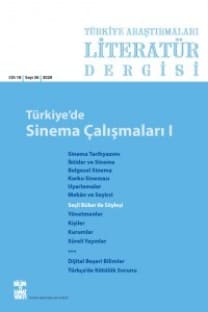Tanzimat Döneminde Mimarlığın Değişen Bilgisi: Fenn-i Mimari, Gazeteler ve Diğerleri
Osmanlı mimarlığı için XVIII. yüzyıl ve sonrası üzerine, inşa edilmiş yapıların Avrupa’dakilere benzerliğini vurgulayarak geliştirilmiş olan “Batılılaşma” söylemi, ima ettiği orijinal/kopya, Doğu/Batı ayrımları nedeniyle problemlidir. Buna karşılık XIX. yüzyıl Osmanlı mimarlığının sınırlı yazılı bağlamı içinde buralı özneyi vurgulayan yeni tarihyazımsal stratejiler geliştirilmelidir. Burada, öznesi Tanzimat bürokrat ve aydını olarak belirlenen ve Batı’ya göre biçimlenen söylemsel alanda, mimarlık pratiklerini de yakından ilgilendiren doğru bilgi mekanizmasının yeniden kurulduğu iddia edilmektedir. Bu doğrultuda Tanzimat döneminde mimarlık bilgisinin değişimine tanıklık eden fenn-i mi‘mârî teriminin hangi söylemsel pratikler içinde kullanıldığı ve taşıdığı anlamın bu pratiklere paralel olarak nasıl dinamik tutulduğu sorgulanmaktadır. Diğer taraftan da mimarlık bilgisinin değişen içeriğine paralel olarak İstanbul üzerinden görünür olan kentin tarihsel dokusunun yeni filizlenen ve popüler bir bilgi alanı olarak bu bölgeye nasıl dahil edildiği tartışmaya açılmıştır.
Anahtar Kelimeler:
Tanzimat Dönemi, Batı, Bilgi, Fenn-i Mimârî, İstanbul
The Transformation of Architectural Knowledge Throughout the Tanzimat Period: Fenn-i Mimari, Newspapers and Others
The discourse of “westernization” utilized for discussing the eighteenth and nineteenth century Ottoman architecture emphasizes the formal similarities of these buildings to those in Europe. This is quite problematic because it implies conceptual oppositions such as original/copy or East/West. Instead, it is argued here that there is need for a new historiographical strategy with further emphasis on the Ottoman subject for discussing the nineteenth century Ottoman architecture in regard to its limited textual context. Thus, this study proposes that in this period the mechanism of true knowledge has been reconstituted upon the discursive field shaped in line with the discourse on West and the subject of this process is the Tanzimat bureaucrat/intellectual. This transformation also has direct influence on the architectural practices. In this respect, it is aimed here to discuss how the term fenn-i mi‘mârî (“science” of architecture) was utilized in certain discursive practices in tune with the transformation of architectural knowledge and how the meaning it implied was transformed accordingly. In addition, this study examines how the historic fabric of the city that became visible through Istanbul was further included within the concurrent territory of architectural practices as a newly flourishing and popular realm of knowledge.
Keywords:
Tanzimat Period, the West, Knowledge, Science of Architecture, İstanbul,
- ISSN: 1303-9369
- Başlangıç: 2003
- Yayıncı: Bilim ve Sanat Vakfı
Sayıdaki Diğer Makaleler
YTÜ Mimarlık Bölümü'nde Bir Lisansüstü Programı Olarak Mimarlık(lar), Tarih(ler)i ve Kuramları
Sinan Historiyografisine Global Bir Bakış
Türkiye'de Mimarlık ve İnşaat Teknolojisi Tarihi Araştırmaları: Kısa Bir Tarihçe ve Bibliyografya
Cumhuriyet Dönemi Mimarlığı: Tanımlar, Sınırlar, Olanaklar
Me'yûs Kalplere Bir İnşirâh: Bedâyi-i Âsâr-ı Osmâniye ve Ressam Hüsnü Bey
Sanat Tarihine Mimarlıktan Bakmak: Turgut Cansever ve Doktora Tezi
Türkiye'de Mimarlık Sempozyumları ve Türk Mimarlık Tarihi Bildirileri Bibliyografyası
Cumhuriyet Dönemi Mimarlık Dergileri ve Mimarlık Tarihi Yazıları Bibliyografyası
